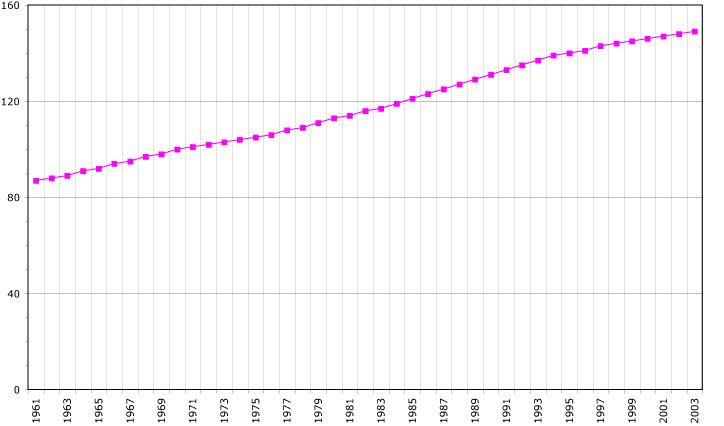 | ||
This article is about the demographic features of the population of Saint Lucia, including population density, ethnicity, education level, health of the populace, economic status, religious affiliations and other aspects of the population.
Contents
Map of Saint Lucia
Population
According to the 2010 population census Saint Lucia has a population of 165,595. The estimated mid-year population of 2014 is 183,600 (medium fertility scenario of The 2012 Revision of the World Population Prospects). The population is evenly divided between urban and rural areas, although the capital, Castries, contains more than one-third of the population.
Structure of the population
Structure of the population (01.07.2009) (Estimates) :
Ethnic groups
Saint Lucia's population is predominantly African/black (141,216 in 2010; 85.3% of the total population) or of mixed African-European descent (17,965; 10.8%). 2.2% of the population is East Indian (3,575 residents in 2010) and 0.6% white (991). Saint Lucia also has a small Amerindian (Carib) population. During the past decades the Amerindian (Carib) increased from 366 at the 1991 census (0.3% of the population), 803 at the 2001 census (0.5% of the population) to 951 in 2010 (0.6% of the population.
The remaining 0.5% of the population includes Chinese (0.1%) and people from the Middle East (0.1%).
Languages
The official language is English. Saint Lucian Creole French (Kwéyòl), which is colloquially referred to as Patois ("Patwa"), is spoken by 95% of the population. This Antillean Creole is used in literature and music, and is gaining official acknowledgement. As it developed during the early period of French colonisation, the Creole is derived chiefly from French and West African languages, with some vocabulary from Carib and other sources. Saint Lucia is a member of La Francophonie.
Religion
According to the 2010 census, 90.2% percent of the population of Saint Lucia is considered Christian, 2.3% has a non-Christian religion and 5.9% has no religion or did not state a religion (1.4%).
Roughly two thirds of Christians are Roman Catholics (61.5% of the total population), a reflection of early French influence on the island, and 25.5% are Protestant. The Seventh-day Adventists constitute the largest Protestant group, with 10.4% of the population. Pentecostals are the second largest group (8.9%). The next largest group are Evangelicals (2.3% of the population), followed by Baptists (2.2%). Other Christians include Anglicanism (3.4%) and Jehovah's Witnesses (1.1%),
The number of non-Christians is small. These religious groups include the Rastafarian Movement (1.9% of the population), Hinduism (0.3%) and Muslims (0.1%).
